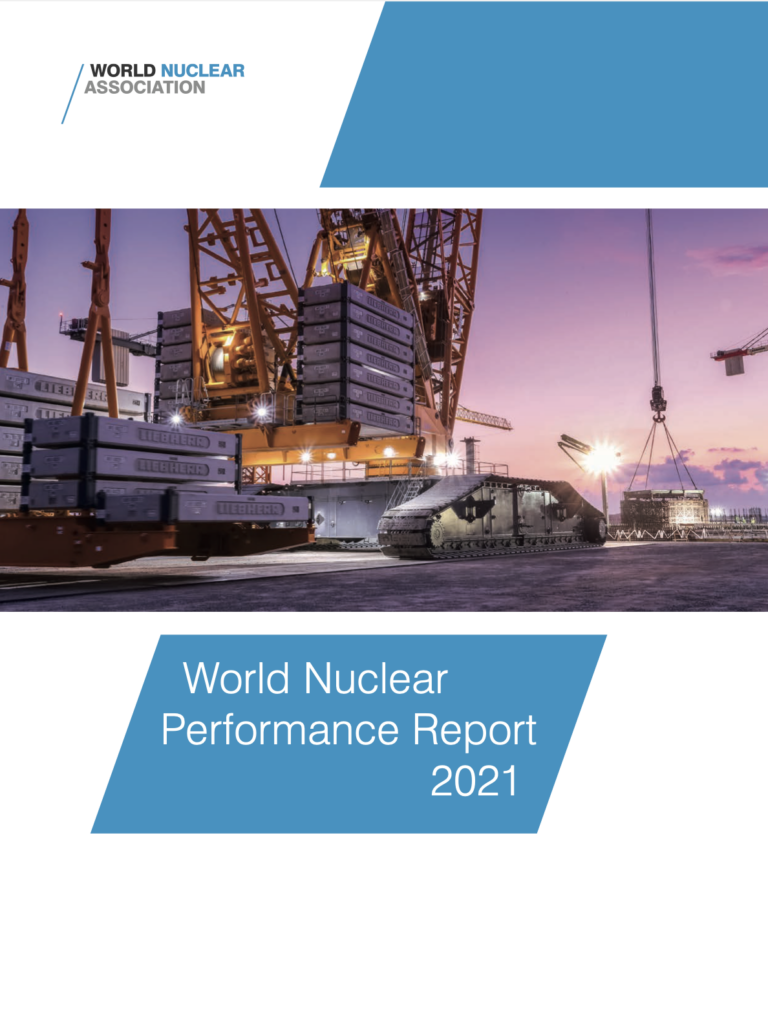
01
World Nuclear Association Performance Report 2021
The World Nuclear Association Performance Report 2021 is now published by World Nuclear Association. Report summarizes the performance of the global nuclear fleet in 2020 in the context of historical data. Document also analyzes data from the Power Reactor Information Service database operated by the International Atomic Energy Agency.
Nuclear production of carbon-free electricity
In 2020, nuclear reactors supplied 2553 TWh of electricity, down from 2657 TWh in 2019. This decrease was strongly influenced by the overall decrease in electricity demand caused by the COVID-19 pandemic. And the fact that nuclear reactors were increasingly being called upon to provide load-following support to the growing share of variable renewable generation.
The performance of the world’s nuclear reactors in 2020 are set out in World Nuclear Association Performance Report 2021, which was published today.

Sama Bilbao y León, director general World Nuclear Association
Launching the report, Dr Sama Bilbao y León, Director General of World Nuclear Association said, “in 2020 the world’s nuclear reactors have shown resilience and flexibility, adapting to changes in demand while ensuring stable and reliable electricity supply.”
The total production capacity from the core is maintained
At the end of 2020 there were 441 operable nuclear reactors, with a combined capacity of 392 GWe. This total capacity has remained almost unchanged for the last three year. With new capacity additions being matched by the amount of nuclear capacity being permanently shutdown.
“With global electricity demand expected to rebound sharply, there is a real risk that greenhouse gas emissions will do so as well. More than half of the reactors permanently shutdown in the last few years have done so not because of technical limitations, but because of political phase-out policies or the failure of markets to adequately recognize the value of low carbon reliable nuclear power. This is a loss of low-carbon generation that the world can ill-afford to squander.“
However, there are promising signs for nuclear. Already in 2021, we have seen four new reactors connected to the grid and construction started on seven new reactors. Although two reactors have permanently shutdown.
Dr Bilbao y León remarked, “It is vital that nuclear generation bounces back further and faster, helping displace fossil fuels. Thus avoiding a sharp rise in greenhouse gas emissions. The operation of the existing nuclear fleet must be maximized and extended as long as feasible, and the pace and scale of new nuclear construction must increase.”
Other key findings from the report
- Five new reactors started up in 2020, but this increase in capacity was countered by the closure of six reactors.
- The median time for construction of reactors grid connected in 2020 was 84 months, down from 117 months in 2019.
- Despite some reactors curtailing generation to account for reduced demand or to offer load-following services. The global capacity factor in 2020 was still high at 80.3%, down from 83.1% in 2019, but maintaining the high performance seen over the last 20 years.
- Nearly two-thirds of reactors having a capacity factor greater than 80%. There is no clear indication that the reduction in electricity demand during the COVID-19 pandemic has significantly impacted reactor performance. Although the number of reactors with capacity factors below 40% is higher than in recent years, although still small.
- There is no age-related trend in nuclear reactor performance. The mean capacity factor for reactors over the last five years shows no significant overall variation with age. With some reactors now being licensed to operate for 80 years the consistency in performance of reactors regardless of age is notable.